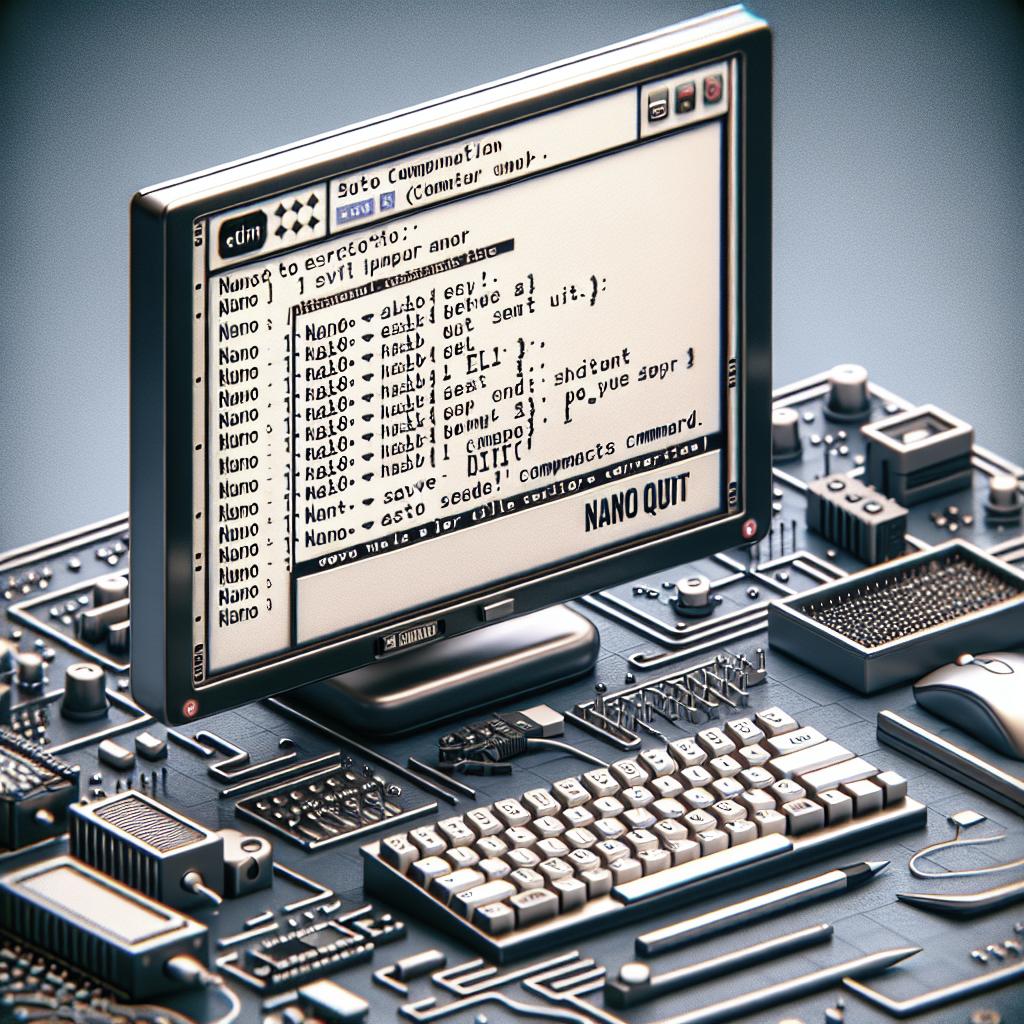Mastering Nano: Saving, Exiting, and Beyond
Nano is a popular text editor used in the Linux command line environment. Known for its simplicity and ease of use, it’s often the first text editor that new Linux users encounter. Despite its user-friendly interface, many users find themselves stuck when it comes to saving and exiting files. This comprehensive guide is designed to break down these essential functions—how to save and exit Nano, as well as how to navigate without saving. We’ll explore key commands and provide useful tips that will elevate your Nano agility. By the end of this article, you’ll possess the know-how to manage your files with confidence, leveraging Nano’s capabilities to enhance your command line experience.
How to Save in Nano? [Nano Save File]
Saving a file in Nano is straightforward, but it’s vital to remember how to execute this function correctly in order to avoid data loss. While editing a file, it’s always a good practice to save your work often. In Nano, this can be done by pressing
Ctrl + O
. This command invokes the “Write-Out” function, allowing you to save changes without exiting the editor.
Upon pressing
Ctrl + O
, Nano will prompt you to “File Name to Write:”. If you opened an existing file, the current name will appear, which you can confirm by pressing
Enter
. Should you need to change the file name or location, simply type the desired path and name, then hit
Enter
to complete the saving process.
How to Exit Nano? [Nano Exit Command]
Exiting Nano can be achieved with a simple command, enabling you to leave the editor environment once you’ve completed your edits. To exit, press
Ctrl + X
. If you haven’t made any unsaved changes, Nano will close immediately, returning you to the command line interface.
However, if changes have been made and are unsaved, Nano will prompt you to “Save modified buffer (ANSWERING “No” WILL DESTROY CHANGES)”. At this point, you can choose to save modifications by pressing
Y
, or discard changes by pressing
N
. This feature acts as a safety net, ensuring that you do not accidentally lose any important data by exiting without saving.
How to Save and Exit Nano? [Nano Save and Exit]
If your goal is to save your work and exit Nano simultaneously, a combination of the aforementioned commands will accomplish this. First, press
Ctrl + O
to save your work. Make sure to confirm the file name and location, then press
Enter
to write the changes. Immediately following that, use
Ctrl + X
to exit the editor.
This two-step process is intuitive and helps reinforce the habit of frequently saving your work while ensuring a smooth exit. Over time, this sequence of actions will become a part of your muscle memory, allowing you to efficiently save and exit files in Nano with confidence.
How to Exit Nano Without Saving?
In cases where you need to exit Nano without saving any changes, the process is straightforward and similar to exiting with saved changes. Start by pressing
Ctrl + X
. Nano will alert you if there are unsaved modifications with a prompt for saving changes.
At this critical juncture, instead of saving the changes, press
N
. This action confirms your decision to discard any edits made during the session. As a result, Nano will close, and you will revert back to the command line without the modified file being saved, preserving its original state.
Some Useful Nano Editor Commands
Apart from saving and exiting, Nano offers numerous commands that facilitate efficient text editing. Familiarizing oneself with these commands can enhance productivity. The
Ctrl + K
command, for instance, cuts the current line and adds it to a clipboard buffer. This is particularly useful for reorganizing text within your file.
Similarly,
Ctrl + U
pastes the last cut line back into the document. Meanwhile,
Ctrl + W
helps quickly locate specific text within your document. Mastery of these commands, alongside saving and exiting commands, empowers users to navigate and edit with ease.
Final Thoughts
Mastering the basic commands in Nano—especially saving, exiting, and cutting/pasting—can significantly improve your editing efficiency in the terminal. This guide aimed to clarify and simplify these processes, allowing you to handle your text files with confidence and precision. To help you retain the key points, we’ve summarized the main commands and their functions in the table below.
| Action | Command | Description |
|---|---|---|
| Save file |
Ctrl + O |
Access the “Write-Out” function to save changes to a current file. |
| Exit Nano |
Ctrl + X |
Exit the editor, with a prompt to save if there are unsaved changes. |
| Save and exit |
Ctrl + O then Enter , Ctrl + X |
Saves the changes and exits Nano. |
| Exit without saving |
Ctrl + X , then N |
Exits the editor without saving any modifications to the file. |
| Cut line |
Ctrl + K |
Cuts the current line and stores it in the clipboard. |
| Paste line |
Ctrl + U |
Pastes the last cut line back into the document at the cursor position. |
| Search text |
Ctrl + W |
Allows you to search for specific text within the document. |


